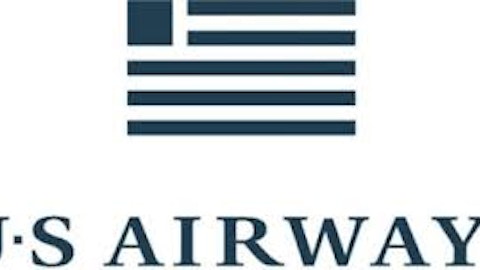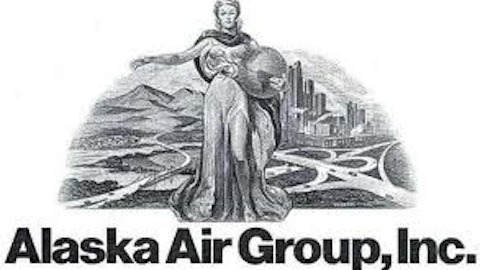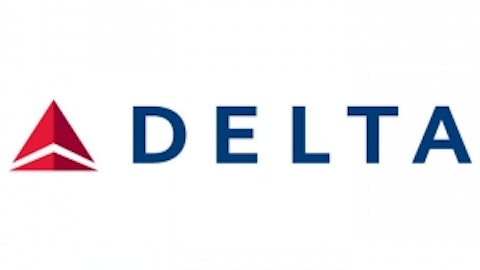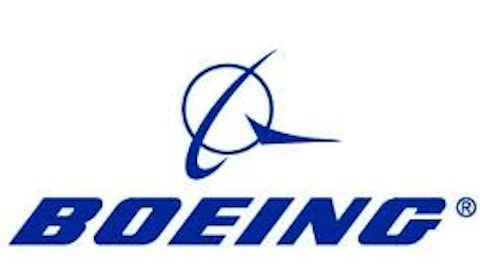Price to earnings ratios are one of many measures for a company’s value. Simply put, it shows how many times earnings the market is willing to pay for a stock. However a reasonable P/E ratio varies by company and by industry. A rapidly growing start-up can trade at a four-digit P/E ratio for a period of time while a company in a low growth or shrinking space may trade for a P/E ratio in the single-digits. This article will examine the airline industry from a P/E perspective and try to give possible explanations for the variety of valuations.
A wild industry
Airlines are known for making some investors rich while wiping out others completely. It is an industry that has consumed billions of dollars and where high capital costs continue to attract investors who want to do what few others could. But even in this industry we have less exciting things like P/E ratios. Let’s take a look at them.
| Airline | Current P/E |
| US Airways Group, Inc. (NYSE:LCC) | 5.5 |
| Delta Air Lines, Inc. (NYSE:DAL) | 18.4 |
| United Continental Holdings Inc (NYSE:UAL) | N/A |
Among the three non-bankrupt major carriers we get quite a variety of P/E ratios. At one end, United Continental Holdings Inc (NYSE:UAL) trades with a useless P/E ratio due to negative earnings and at the other end, US Airways Group, Inc. (NYSE:LCC)trades for a lowly 5.5 times earnings. And in the middle, Delta Air Lines, Inc. (NYSE:DAL) trades for a P/E ratio in the upper teens.
However, there are explanations for this variety of numbers with some more clear than others. United Continental Holdings Inc (NYSE:UAL)’s earnings were impacted by merger-related expenses stemming from the integration between United Airlines and Continental Airlines. US Airways’ P/E ratio may be being kept down due to factors such as its smaller international network or uncertainty surrounding the merger with American Airlines, while Delta represents a completed airline merger and its P/E ratio could be setting a new normal in the industry. Or Delta could be trading more based on future earnings expectations.
The following table uses three different P/E ratios to approximate target prices. The current US Airways Group, Inc. (NYSE:LCC) P/E ratio is the lowest, an approximation of a P/E of 10 is the second, and the current Delta P/E ratio is the final column.
| Airline | 2014 EPS estimate* | P/E = 5.5 | PE = 10 | P/E = 18.4 |
| US Airways Group | $2.97 | $16.34 | $29.70 | $54.65 |
| Delta Air Lines | $3.04 | $16.72 | $30.40 | $55.94 |
| United Continental Holdings | $4.93 | $27.12 | $49.30 | $90.71 |
Yahoo! Finance
Clearly the last column has very high estimates that are unlikely to be met. This is largely due to applying the current P/E ratio at Delta, even though the airline is probably trading at a premium to it current P/E ratio due to higher expected future earnings. Airlines tend to carry with them a greater investment risk which causes a lower valuation than a company with similar earnings growth in a more stable industry. For this reason, while I am bullish on the industry, I believe a P/E ratio of around 10 is a more acceptable valuation. But with projected earnings growth the way it is, this still leaves shares plenty of room to run in the next couple years.





